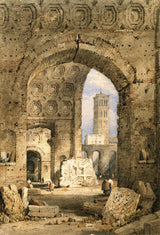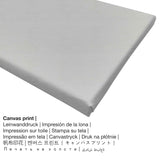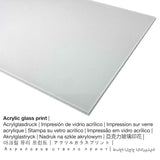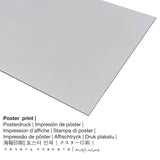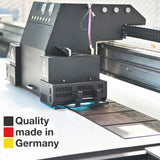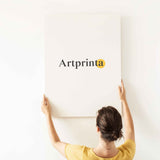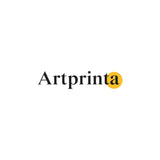Samuel Prout, 1850 - Temple of Peace, Roman Forum - fine art print
Tax included. Shipping calculated at checkout.
The artwork with the title Temple of Peace, Roman Forum as an art print
This work of art with the title Temple of Peace, Roman Forum was made by the artist Samuel Prout in 1850. The original version of the artwork was painted with the size: 17 x 11 7/8 in and was painted with the technique of watercolour and gouache strengthened with pen and ink on off-white paper. Today, the work of art is in the the art collection of Indianapolis Museum of Art. The artpiece, which is part of the public domain is supplied with courtesy of Indianapolis Museum of Art.Creditline of the artwork: . Furthermore, alignment is in portrait format with a ratio of 2 : 3, which means that the length is 33% shorter than the width.
Product materials you can choose from
The product dropdown menu provides you with the chance to pick your prefered material and size. You can choose your preferred size and material among the subsequent alternatives:
- Poster (canvas material): The Artprinta poster is a UV printed sheet of flat cotton canvas with a nice structure on the surface, which resembles the actual version of the masterpiece. The printed poster is designed for framing your art print with the help of a personal frame. Please bear in mind, that depending on the size of the canvas poster print we add a white margin of something between 2-6 cm round about the painting, which facilitates the framing with your custom frame.
- Canvas print: A canvas print, which should not be confused with a painting on a canvas, is a digital copy printed from a UV direct printing machine. A canvas generates a exclusive look of three dimensionality. Furthermore, a canvas creates a nice and pleasing ambience. Canvas prints are relatively low in weight, meaning that it is easy and straightforward to hang up the Canvas print without the help of any wall-mounts. A canvas print is suitable for any type of wall in your home.
- Aluminium dibond (metal print): Aluminium Dibond prints are prints on metal with an outstanding depth effect - for a modern impression and non-reflective surface structure. The Direct Print on Aluminum Dibond is the perfect introduction to fine art reproductions with aluminum. The bright and white parts of the original work of art shimmer with a silky gloss, however without any glow. Colors are luminous and bright, details of the print appear very clear.
- Print on acrylic glass: An print on acrylic glass, which is sometimes described as a print on plexiglass, will change the original artwork into stunning décor. Moreover, the acrylic print makes a great alternative to canvas and dibond art prints. Your work of art is being made with state-of-the-art UV printing technology. With an acrylic glass fine art print contrasts and minor artwork details will be more identifiable because of the subtle tonal gradation of the picture. Our acrylic glass protects your selected art replica against light and heat for decades.
Legal note: We try our utmost to describe our products in as much detail as possible and to demonstrate them visually. At the same time, the pigments of the printed materials, as well as the printing can differ somehwat from the representation on your device's monitor. Depending on the screen settings and the quality of the surface, not all colors are printed as realistically as the digital version depicted here. Because all our art reproductions are processed and printed by hand, there might also be minor deviations in the motif's size and exact position.
Product background info
| Product type: | art reproduction |
| Reproduction: | digital reproduction |
| Production technique: | UV direct printing (digital print) |
| Production: | Germany |
| Type of stock: | production on demand |
| Intended usage: | home design, wall decoration |
| Orientation: | portrait alignment |
| Image ratio: | length to width 2 : 3 |
| Meaning of image ratio: | the length is 33% shorter than the width |
| Materials you can select: | acrylic glass print (with real glass coating), poster print (canvas paper), metal print (aluminium dibond), canvas print |
| Canvas on stretcher frame (canvas print) size variants: | 20x30cm - 8x12", 40x60cm - 16x24", 60x90cm - 24x35", 80x120cm - 31x47", 100x150cm - 39x59" |
| Acrylic glass print (with real glass coating) size variants: | 20x30cm - 8x12", 40x60cm - 16x24", 60x90cm - 24x35", 80x120cm - 31x47", 100x150cm - 39x59" |
| Poster print (canvas paper) size options: | 40x60cm - 16x24", 60x90cm - 24x35", 80x120cm - 31x47" |
| Dibond print (alumnium material) variants: | 20x30cm - 8x12", 40x60cm - 16x24", 60x90cm - 24x35", 80x120cm - 31x47" |
| Frame: | not available |
Structured artwork data
| Name of the painting: | "Temple of Peace, Roman Forum" |
| Categorization: | painting |
| General category: | modern art |
| Artwork century: | 19th century |
| Year: | 1850 |
| Age of artwork: | 170 years old |
| Artwork original medium: | watercolour and gouache strengthened with pen and ink on off-white paper |
| Original size (artwork): | 17 x 11 7/8 in |
| Exhibited in: | Indianapolis Museum of Art |
| Museum location: | Indianapolis, Indiana, United States of America |
| Museum website: | www.discovernewfields.org |
| License type: | public domain |
| Courtesy of: | Indianapolis Museum of Art |
General background information about the artist
| Artist: | Samuel Prout |
| Also known as: | Prout, S. Proutt, Prout Samuel, Samuel Prout |
| Gender of the artist: | male |
| Artist nationality: | British |
| Professions of the artist: | painter, lithographer |
| Home country: | the United Kingdom |
| Classification: | modern artist |
| Died aged: | 69 years |
| Year of birth: | 1783 |
| Born in (place): | Plymouth, City of Plymouth, England, United Kingdom |
| Year of death: | 1852 |
| Deceased in (place): | London, Greater London, England, United Kingdom |
Copyright © | www.artprinta.com (Artprinta)
What specifically does the website of the Indianapolis Museum of Art state about this artwork painted by Samuel Prout? (© - by Indianapolis Museum of Art - Indianapolis Museum of Art)
Gallery label: Besides his specialty in depicting time-worn medieval buildings, Prout created a sizeable body of watercolors of the classical ruins in the Roman Forum. He made his site sketches in 1824 and referred to them again and again over the next 25 years to produce numerous versions in watercolor from a single sketch. While the so-called Temple of Peace (actually the Basilica of Constantine) was not among Prout's most repeated subjects, its massive brick vaulting suited Prout's fascination with crumbling masonry.
Indianapolis Museum of Art Bequest of Kurt F. Pantzer

